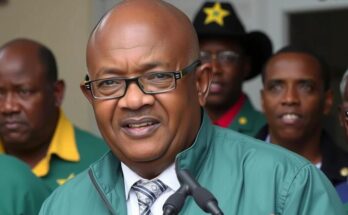Recent exit polls reveal a stark shift in American voting patterns, indicating that lower-income voters are increasingly leaning Republican, while wealthier voters support Democrats. This changing allegiance reflects broader socio-economic dynamics, including the influence of a Professional-Managerial Class (PMC) that mediates class interactions. The desire for self-employment and autonomy among working-class voters emphasizes the complexities within these class interactions, reinforcing the need for a restructured understanding of American political dynamics.
Recent U.S. presidential elections have revealed a significant shift in voting patterns that indicates a complex class dynamic. For the first time since the 1960s, many low-income voters earning less than $50,000 exhibited a pronounced preference for Republican candidates, while those with annual incomes above $100,000 favored Democrats, epitomized by Vice President Kamala Harris’s support among the affluent. Tim Barker noted that this division might represent not only a shift in allegiance but also a growing dealignment among voters across economic classes. The presence of a Professional-Managerial Class (PMC), established through educational credentials and positions of authority, emerges as a critical factor in understanding these voting behaviors. This class influences working-class experiences and attitudes, contributing to the disdain for the values promoted by the PMC. The political landscape is further complicated by the desire among many to rise through self-employment as a means of gaining independence and rejecting perceived PMC norms. Moves towards a welfare system that does not strictly rely on state provisions may resonate well with working-class aspirations. While such observations provide necessary insights into contemporary class dynamics, they also highlight a need for a more nuanced understanding of societal structures influencing American politics.
The article discusses contemporary shifts in American voting behaviors reflective of class divisions beyond traditional economic measures. Historically, the votes of working-class individuals were closely tied to their economic status, typically favoring Democratic candidates who aspired towards social equality. With recent exit polls indicating increased Republican support among lower-income voters and a Democratic shift among the affluent, a three-class analysis emerges. The professional-managerial class plays a pivotal role, mediating experiences and views towards traditional platforms, suggesting complexities in class relationships.
The evidence presented indicates that the American electoral landscape is undergoing significant transformations driven by class dynamics that cannot be distilled into oversimplified dichotomies. A three-class structure, including the working class, affluent class, and the Professional-Managerial Class, highlights the intricate interplay of social and political influences shaping voter preferences. These dynamics shed light on the ongoing challenges faced by political parties in addressing the realities of class existence and aspirations, particularly in the context of social programs and economic opportunities.
Original Source: foreignpolicy.com




